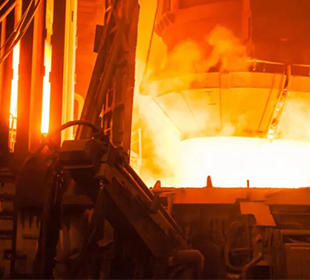How Rubber Hoses Are Made
2023-02-26 09:59:04
A rubber hose is a cylindrical tube that's used to transport fluids from one point to another. They can be made in many different ways and are often used for a variety of purposes.
Rubber hoses are manufactured via an extrusion process, which is a method of converting raw rubber materials into a shaped material. This system includes a collection of raw material in a hopper suspended above the conveyance channel and a long turning shearing screws. The shearing screw generates friction and pressure that causes the raw material to become molten. The molten material is then released from the shearing screw's end and enters an extrusion den, which is a metal plate that shapes the product.
Rubber hoses can be used in various industries, or for everyday products such as automotive air hoses. Rubber hoses have certain key properties, regardless of their intended purpose. Only the right rubber can achieve these key properties.
There are a few general types of synthetic rubber that can be used for a wide range of hose and gasket applications. They are typically resistant to high temperatures and oil. They are also very good at handling sunlight and ozone.
Popular synthetic rubber, neoprene (or chloroprene), is often found in mid-range gasket and hose products. It offers moderate oil resistance, good temperature resistance and handles sunlight and ozone very well.
Buna-N, nitrile and butyl are all common synthetic rubber materials. These are commonly found in industrial, commercial and agricultural hoses.
There are many ways to make a rubber hose: extrusion, spiral wrapping and calendaring. Typically, small diameter hoses are produced through extrusion while larger diameter hoses are created through spiral wrapping or calendaring.
Some of the best hoses for vibration absorption are polyurethane (PUR). This type of rubber is often used in air hoses to absorb abrasion and shock and can be used in any application that requires a higher level of vibration absorption.
These hoses are available in various lengths and can be fabricated in several different sizes, depending on the exact specifications required for the job at hand. These hoses are suitable for industrial, commercial and agricultural applications that involve heavy-duty transportation.
Rubber hose is also used in a variety of other industries, including sand and grit blasting. It can be used in wind-blasting, rust removing, numbing and dry blasting in metal constructions.
Manufacturers of high pressure hose make hose that can be used in water, air, and aqueous environments. It has a steel reinforcement and a black synthetic rubber cover. It can be used for petroleum, petrochemical, and water transfer applications.
An optional cover can be added to the hoses to provide additional protection against dirt, dust, and chemicals. They are also available with a variety of thicknesses and colors.
Custom high pressure tubing, hose and expansion joints are available from this manufacturer. The hoses are ideal for fuel, lubricant, chemical, steam, HVAC, paper and pulp, marine, mining and other applications. They are RoHS compliant and made in the USA.